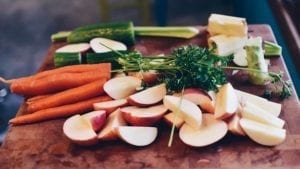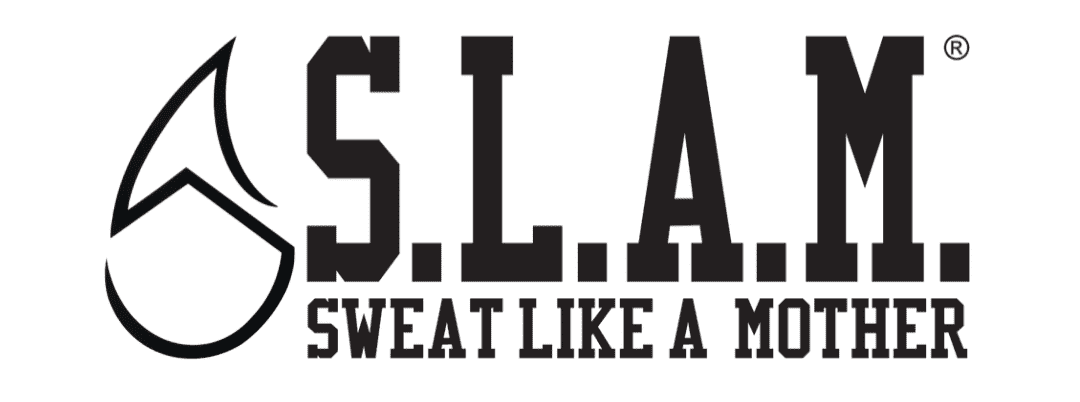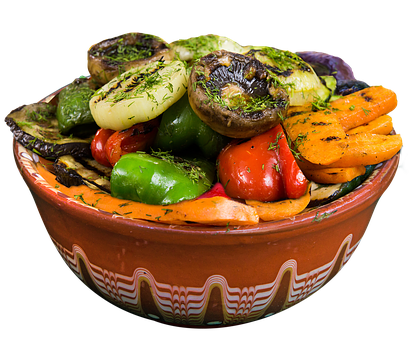We know we need to eat our veggies. They’re so good for us since they’re full of fiber, vitamins, minerals, and antioxidants. I want to share with you my two favorite ways to prepare veggies!
Roast them. I will admit this is how we eat 90% of our veggie side dishes. Potatoes, broccoli, cauliflower, Brussels sprouts, green beans, garbanzo beans, winter and summer squash, tomatoes, bell peppers, egg plant, carrots, beets, parsnips, rutabaga, onions, snap peas, and mushrooms – it seems all but cucumber and spinach get roasted in this house. Roasting veggies brings out the deliciousness in veggies. Crispy edges and soft centers are almost irresistible, especially after they’ve been sprinkled with a little salt and pepper.
While I don’t have a particular recipe for each veggie, we use a process.
- Cover the baking sheet(s) in foil and grease with oil or spray with Pam.
- Pre-heat the oven to 400°
- Chop the veggies, keeping the pieces about the same size. Toss with your favorite cooking oil and dried herbs.
- Place the harder veggies on one sheet and the softer, faster-cooking veggies on a different sheet.
- Place harder veggies in oven and roast for about 10 minutes – stir veggies and roast again for 10-20 minutes, stirring every 10 minutes to prevent burning the veggies on one side. Softer veggies take about 10-15 minutes, so add those in accordingly.
- When veggies are done roasting, sprinkle with salt and pepper.
You’ll want to avoid using oils that have a lower smoke point than the oven temp (butter, grapeseed oil, coconut oil, extra virgin olive oil) to keep the flavor of the veggies on point. Adding salt after the food is done cooking is good for two reasons – salt lowers the smoke point of fat and just-added-salt will enhance the flavor of the veggies. Now, enjoy those veggies!
Make a fabulous salad! I love a good salad. One that offers flavor and texture in every bite. I’m sort of a salad snob; it’s awful, I know. Salads can be the afterthought of the meal, with way more time, attention, and prep given to other meal components such as the main dish. I don’t want to sound like a harsh critic – but I find that most salads are too hard to eat. The leaves are too big to bite and they fling dressing everywhere when you try and wrestle the palm-sized spinach leaf from under the huge cucumber and carrot slices. Have you ever had one of these salads? It’s easier just to say no-thank you than to try and enjoy the top half with dressing on it and pick through the dry leftover leaves on the bottom – hoping for a dressing remnant.
I think my love of a good salad came from visiting a restaurant in Washington, D.C. called Chopt. Oh my, they had the best salad! These people were salad people! The offered such a variety of toppings – it was refreshing to see that other veggies had made the jump to salad-topping-worthiness. But, the best part was what they did with your creation – they chopped it! All of it! When I visited (which was like a decade ago), they dumped out your salad ingredients Cold Stone style on a cutting board and used a huge knife to chop the whole salad into bite-sized pieces. Every forkful was a flavor and texture cornucopia! My mind was blown.
Since then, I have set out to make all of my salad experiences as good as this one. I have branched out in my salad toppings and use the (legit and sophisticated) crissy-cross method (two knives to cut the salad into smaller pieces) to imitate the Chopt salad cutting.
Think outside the box when it comes to toppings. I like to include veggies (often leftover roasted veggies), something sweet (dried or fresh fruit), something crunchy (nuts, roasted chickpeas, dehydrated apple chips), and a filler (roasted potatoes, cooked brown rice, cooked quinoa – any grain, really). This is the base of the salad. My go-to salad dressing is olive oil and balsamic vinegar topped with a twist or two of the salt and pepper shaker and voila! deliciousness! When my salad becomes a meal instead of a side dish, I like to add a little more fat – goat cheese or avocado, a concentrated protein – beans, canned tuna, cooked chicken, and a side of chips or homemade crackers. This to me is a good salad.
If you need a little inspiration, check out the menu at www.choptsalad.com/menu. Their combinations will certainly help you build a fabulous salad!
Preparing my veggies in a way that I find palatable and delightful has certainly helped me increase my intake of plants. There are plenty of ways to prepare a veggie – you just have to find the way that makes your mouth most happy! That’s the best way to increase your intake. And, increasing your intake improves your overall health. We want to know – how do you love your veggies?


Recent Comments